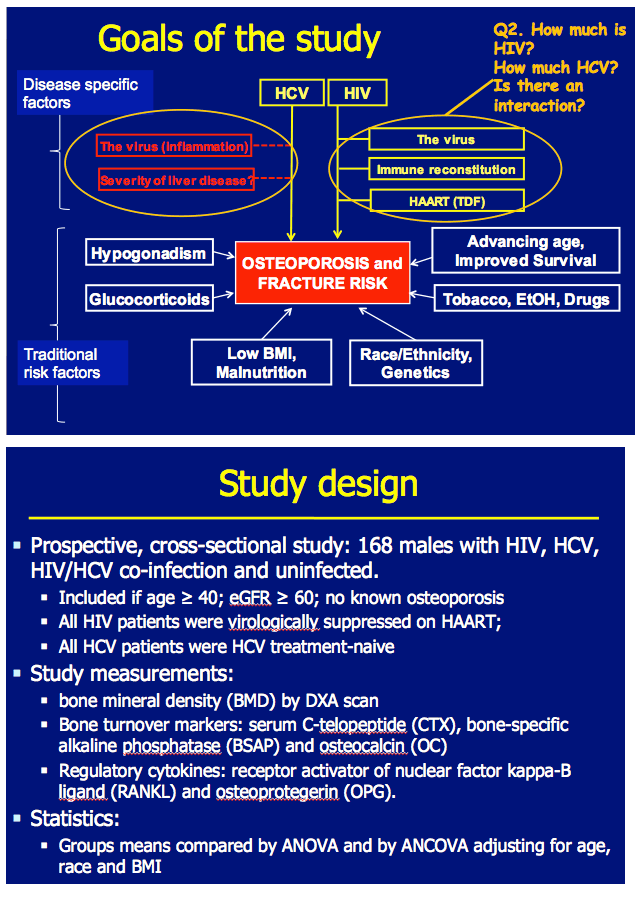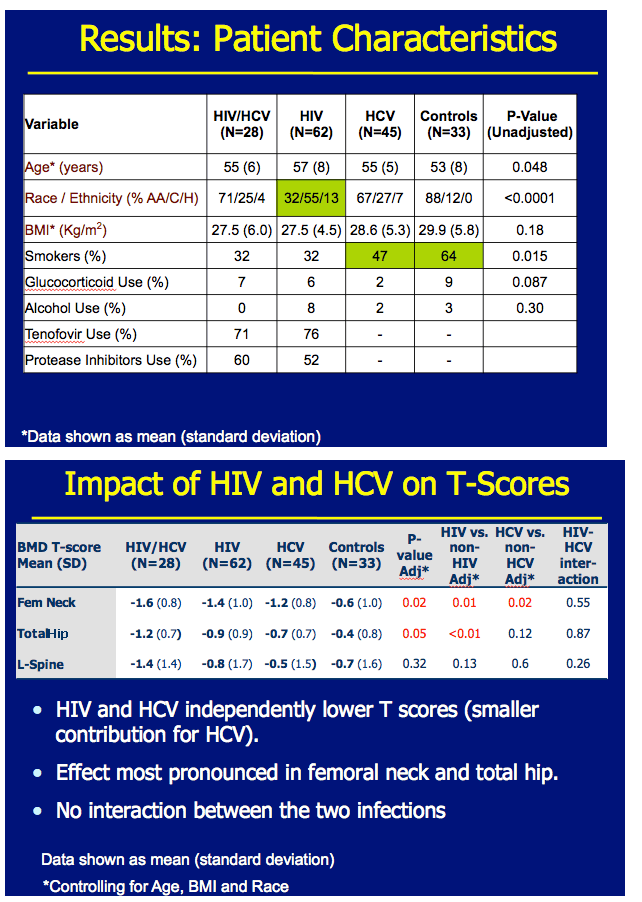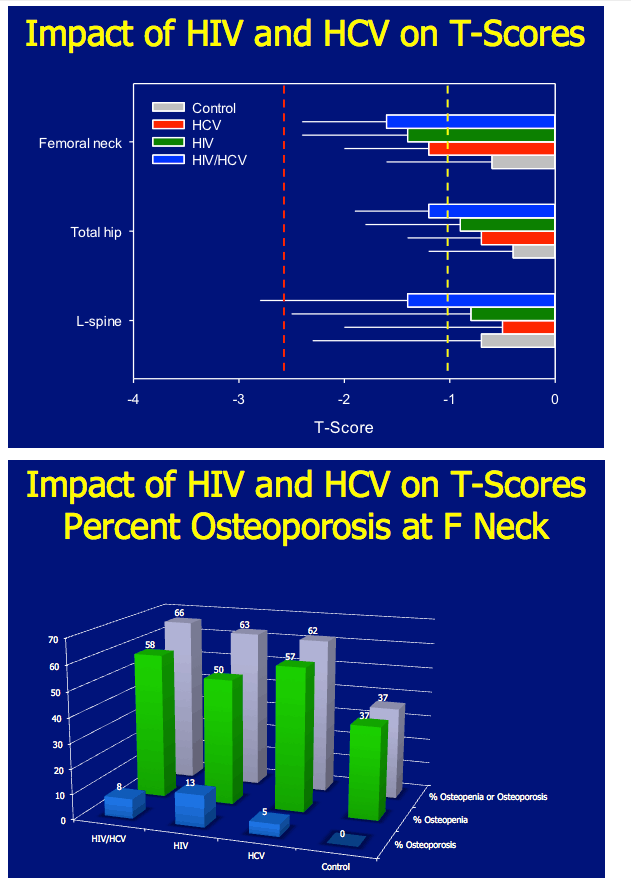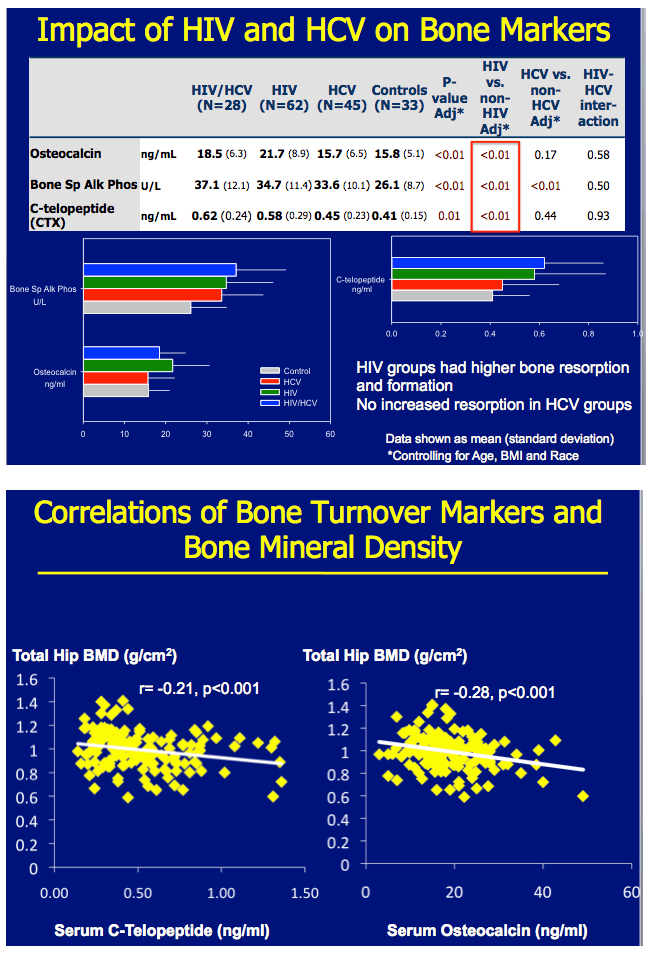 |
 |
 |
| |
HIV[ART] and HCV infections independently contribute to lower bone mineral density but have different effects on bone turnover markers
|
| |
| |
Presented by Roger Bedimo (United States).
AUTHOR CONCLUSIONS
HIV and HCV independently lower BMD and T-scores (smaller contribution for HCV).
-Effect most pronounced in femoral neck and total hip.
-No interaction between the two infections.
HIV impact on BMD could be explained by increased turnover (resorption and formation markers).
-See Cotter et al. 7th IAS, MOPE077
-Turnover doesnŐt appear to be driven by RANK/RANKL/OPG system
HCV is not associated with increased bone resorption
-Increased OPG and trends toward increased RANKL
N. Maalouf1, H. Drechsler1,2, S. Zhang1, J. Cutrell1, G. Brown1,2, I. Farukhi2, P. Tebas3, R. Bedimo1,2
1University of Texas Southwestern Medical Center, Medicine, Dallas, United States, 2VA North Texas Health Care System, Medicine, Dallas, United States, 3University of Pennsylvania, Medicine, Philadelphia, United States
Program Abstract
Background: Osteoporosis is increasingly reported in the aging HIV-positive population. Hepatitis C virus (HCV) further increases risk of osteoporotic fractures, although underlying mechanisms remain unclear.
Methods: This prospective, cross-sectional study recruited 168 male volunteers with HIV, HCV, HIV/HCV co-infection or non-infected controls. All HIV infected patients were virologically suppressed on HAART. Subjects underwent bone mineral density (BMD) testing by DXA scan and measurement of fasting bone turnover markers (BTM) (serum C-telopeptide [CTX] and osteocalcin [OC]), and regulatory cytokines (receptor activator of nuclear factor kappa-B ligand [RANKL] and osteoprotegerin [OPG]).
Results: Baseline age and BMI are shown in the Table. Both HIV and HCV significantly lowered femoral neck and total hip BMD after adjusting for age, race and BMI. Serum CTX and OC were significantly higher in the HIV infected groups (HIV and HIV/HCV) compared to non-HIV infected groups (HCV and controls) (p< 0.01), while HCV had no significant effects on these two markers (p>0.15). HCV infected groups (HIV/HCV and HCV) had significantly higher mean OPG (p< 0.001) and a trend towards higher RANKL (p=0.076) compared to the non-HCV groups (HIV and Controls), while HIV had no significant effect on these markers (p>0.2). There was no interaction between HIV and HCV on BMD or BTM, which is suggestive of an additive effect. Total hip BMD was negatively correlated with serum OC (r= -0.28, p< 0.001) and CTX (r= -0.21, p=0.01).

*Controlling for age, race and BMI
Conclusions: HIV and HCV infection independently contribute to lower BMD in men. HIV infection is associated with a rise in CTX and OC, whereas HCV infection is associated with a rise in OPG and RANKL.
-------------------------------
Link to webcast:
http://pag.ias2013.org/flash.aspx?pid=237








|
| |
|
 |
 |
|
|